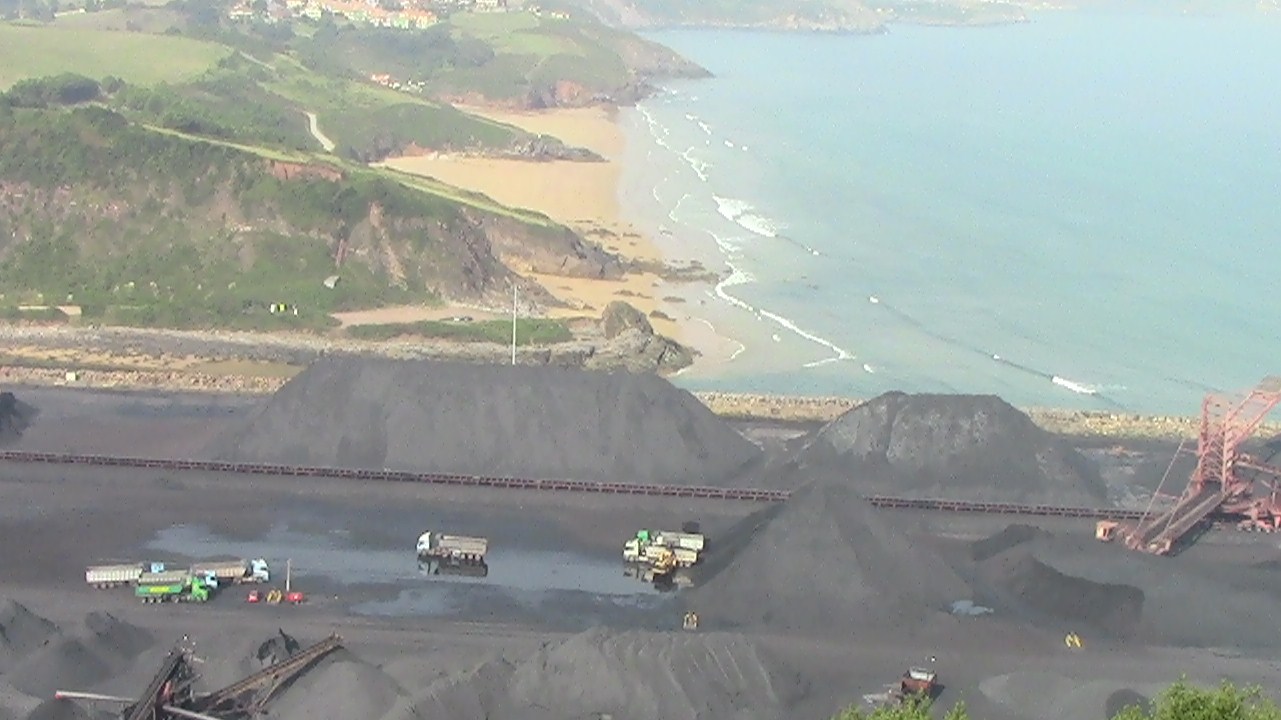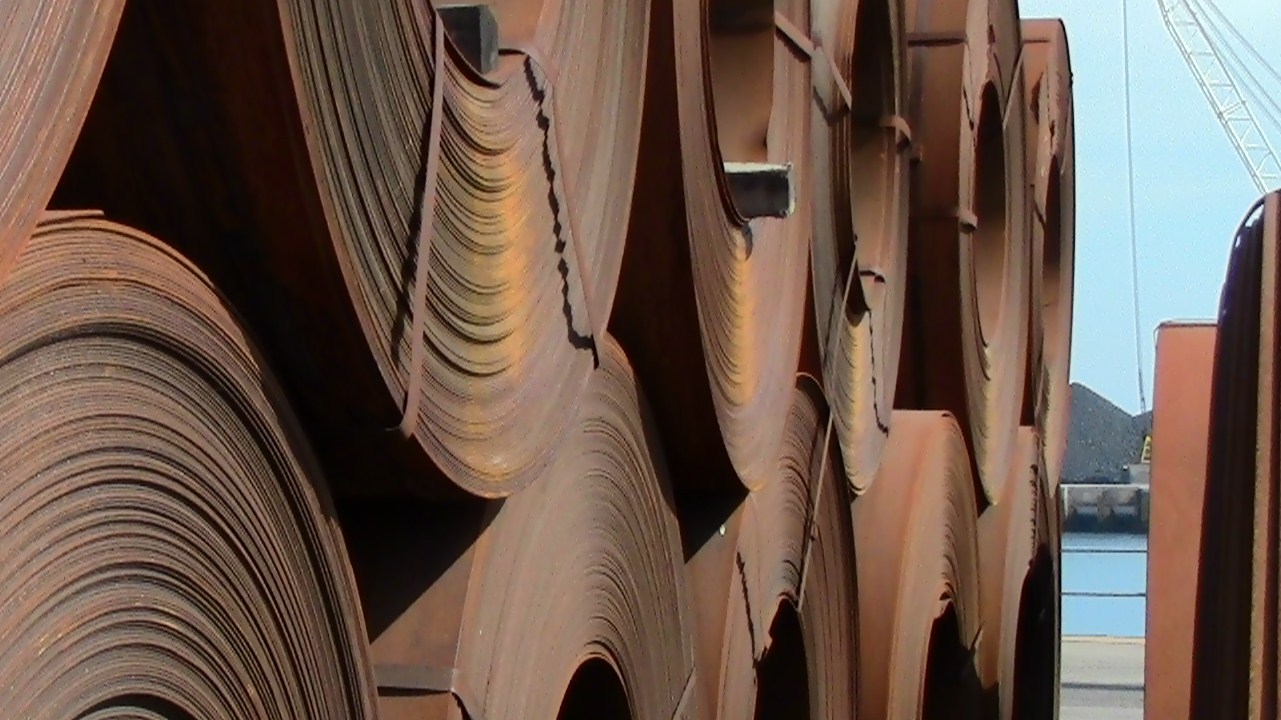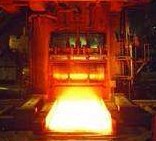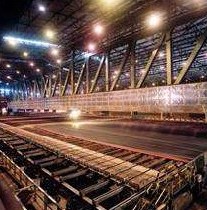ArcelorMittal is the world’s largest steel making company in the world with almost 240,000 employees in 20 countries, including at six locations in Spain: Etxebarri, Lesaka, and Sestao in the Basque Country, Avilés and Gijón in Asturias, and Sagunto in Valencia. The former owner of Mittal Steel, multi-billionaire Indian businessman Lakshmi Mittal, is the chairman and CEO of ArcelorMittal, the company that was formed in the 2006 merger of Mittal and Arcelor, itself the result of a 2002 merger between Aceralia (Spain), Usinor (France) and Arbed (Luxembourg). The Mittal family owns 40% of the company.
In 2013, ArcelorMittal’s total crude steel production was more than 90 million tonnes (10% of world production), 3.5 million of which was made in Spain. Worldwide revenues were almost $80 billion. The product range includes stainless steel, coated steel, tinplate, rebar, wire rod, drawn wire, rail, and sheet piles.
The Avilés–Gijón factory in Asturias operates as a single integrated steel plant with coking facilities, sinter plants, blast furnaces, and hot-rolling mills, and is connected by a private railway. Products such as rail, wire rod, heavy plates, galvanized sheet, and tinplate are primarily sold to the railway, automotive, and construction industries. The raw materials arrive at El Musel (the port of Gijón), where they are unloaded at the company’s own dry-bulk terminal and linked by conveyor belt to the factory. In 2013, 0.7 million tonnes of crude steel was produced.
The big news for production in Asturias in 2015 is the manufacturing of asymmetric hardened rail heads up to 72 meters in length, a high value-added product primarily used for shunting of railway lines for high-speed tracks. The process uses a unique controlled water jet cooling system that required a 25-million-euro investment to modernize facilities. First orders were filled last October for use by Spanish manufacturers.
The Gijón factory is also looking to manufacture longer lengths requiring a further 23-million-euro investment. With new production facilities at the Gijón factory, ArcelorMittal expects to increase production from 790,000 tonnes to over 1 million tonnes. More details of the new production technique and factory expansion can be found in “Arcelor otorga en exclusiva a Gijón la fabricación de un nuevo tipo de carril,” (Diana de Miguel, El Comercio January 25, 2015).
If you drive by the Gijón plant, you will also see a number of wind generator tower parts. ArcelorMittal had planned to produce 200,000 tonnes of steel plate for windmill towers, almost 30% of European wind sector consumption, but it’s not clear how much is currently being fabricated there since the 2007 economic slowdown. There have also been concerns about untreated effluent in the Ria de Avilés after water samples were taken by the Ministry of Environment. Steel is a major part of modern living and hard to imagine a life without its many diverse products, but more work needs to be done to ensure a safe clean working environment for both workers and the public on the Green Coast of Asturias.
- About 12% of the steel made by ArcelorMittal is from recycled steel.
- Much more needs to be done, but carbon dioxide emissions per tonne of crude steel have been reduced by half in the last 40 years.
- Steel manufacturing is expected to grow in Germany, Poland, and the UK, with a “low-level pick-up” in Spain.







Apart from the work it produces in the local area it is also a wonderful opportunity for those artists and photographers interested in industrial landscapes and their effects around the area, for example living relatively near the Avilés plant we have the opportunity here in El Valle to see not one but two or more sunsets…….. One natural and others man made. When the doors of the melting plant are opened a gigantic cauldron pours molten steel outside causing the sky to light up red, orange yellow creating a sunset effect. This could happen late into the night. The other is the train that transports this molten steel has torpedo shaped wagons that travel slowly through the valley, unobserved but again if it is nighttime you will see the wagons with tall licks of flame coming from each torpedo, again a unusual sight.
So often these places are slated for their negative side ie pollution, but as i said there is an artistic value to Asturian industrial landscapes and i would even say that could be promoted as a tourist attraction for photographers etc.
Hi Terri,
Thanks for your very interesting and evocative description of the industrial landscape – indeed, perfect for photographers and especially at night. I am more familiar with the Gijón plant, but have taken lots of great industrial photos at El Musel and some at the port in Avilés, near the Niemeyer Centre. Please send me your photos and I’ll put them up – a great idea for an album of industrial beauty!
Cheers, John